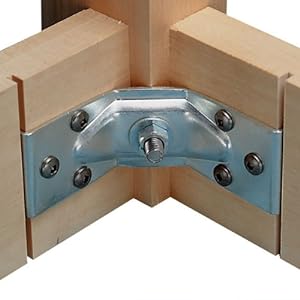stuartpaul
Established Member
As per usual I'm probably over thinking this!
Dining table with 90mm square legs. Rail is 20mm thick and 140mm wide.
I'm familiar with the rule of thirds and this would give a tenon of just over 6mm thick and 95mm wide. I was going to go for 60mm 'deep'.
I'm feeling that 6mm is to flimsy and I'm tempted to increase to 10mm.
Anyone see any problems with the dimensions quoted? I really don't want a failure as the boss would give me considerable grief!
Dining table with 90mm square legs. Rail is 20mm thick and 140mm wide.
I'm familiar with the rule of thirds and this would give a tenon of just over 6mm thick and 95mm wide. I was going to go for 60mm 'deep'.
I'm feeling that 6mm is to flimsy and I'm tempted to increase to 10mm.
Anyone see any problems with the dimensions quoted? I really don't want a failure as the boss would give me considerable grief!




































